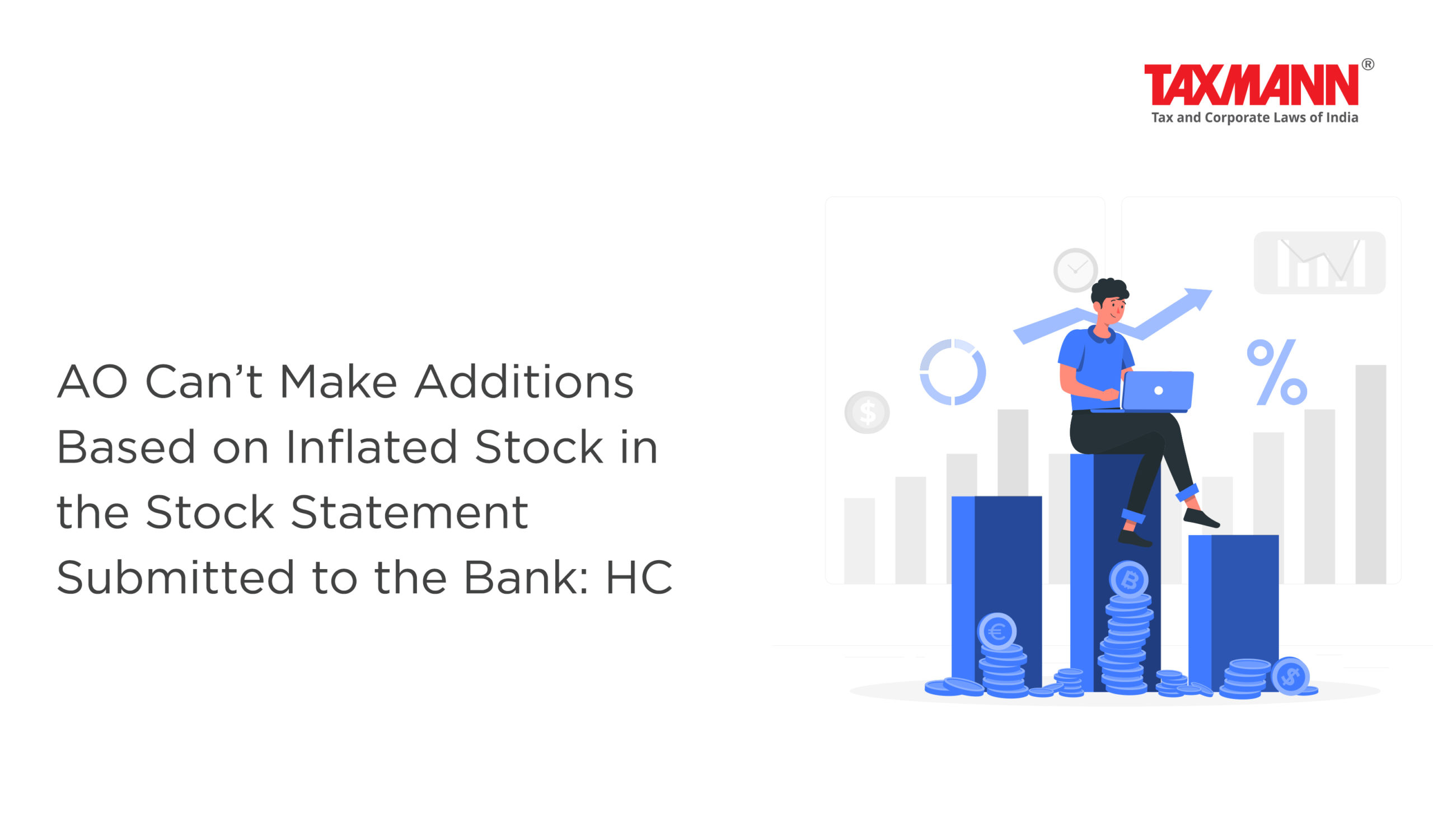AO Can’t Make Additions Based on Inflated Stock in the Stock Statement Submitted to the Bank: HC
- Blog|News|Income Tax|
- 2 Min Read
- By Taxmann
- |
- Last Updated on 1 June, 2023

Case Details: SRI Chitta Ranjan Bera v. ITO - [2023] 150 taxmann.com 277 (Calcutta)
Judiciary and Counsel Details
-
- T. S. Sivagnanam & Hiranmay Bhattacharyya, JJ.
- Ananda Sen, Adv. for the Appellant.
- Smarajit Roychowdhury, Adv. for the Respondent.
Facts of the Case
During the relevant assessment year, the Assessing Officer (AO) noticed the difference in the stock valuation as per books of account and the statement furnished to the bank for approval of cash credit limit. In response, the assessee explained that the stock was declared to the bank purely on an estimate basis. The bank relied upon the stock statement, granted cash credit facility and never physically verified whether physical stock tallies with the stock statement.
Unsatisfied with the response, AO made additions to the assessee’s income based on the stock report submitted to the bank.
On appeal, the CIT(A) confirmed the additions and the Tribunal upheld the same. Aggrieved by the order, the assessee filed the instant appeal before the Calcutta High Court.
High Court Held
The High Court held that the assessee’s income is to be assessed by the AO based on the material which was required to be considered for the purpose of assessment and ordinarily not based on the statement that the assessee gave to a third party unless there is material to corroborate that statement of the assessee given to a third party, even if it be a bank.
Mere fact that the assessee had made such a statement by itself cannot be treated as having resulted in an irrebuttable presumption against the assessee. The burden of showing that the assessee had undisclosed income is on the AO. That burden cannot be discharged by merely referring to the statement given by the assessee to a third party in connection with the transaction, which was not directly related to the assessment and making that the sole foundation for a finding that the assessee had deliberately suppressed his income.
Thus, it is the burden upon the AO to show that the assessee had undisclosed income, and merely by referring to a bank statement, the assessment could not have been completed. Consequently, the assessee’s appeal was allowed.
List of Cases Reviewed
-
- M. A. No. 173 (Kol.) of 2008, dated 11-9-2009 set aside.
- CIT v. N. Swami [2002] 125 Taxman 233 (Mad.) (para 6)
- CIT v. Acrow India Ltd. [2008] 298 ITR 447 (Bom.) (para 6) followed.
List of Cases Referred to
-
- CIT v. N. Swami [2002] 125 Taxman 233 (Mad.) (para 5)
- CIT v. Acrow India Ltd. [2008] 298 ITR 447 (Bom.) (para 5).
Disclaimer: The content/information published on the website is only for general information of the user and shall not be construed as legal advice. While the Taxmann has exercised reasonable efforts to ensure the veracity of information/content published, Taxmann shall be under no liability in any manner whatsoever for incorrect information, if any.

Taxmann Publications has a dedicated in-house Research & Editorial Team. This team consists of a team of Chartered Accountants, Company Secretaries, and Lawyers. This team works under the guidance and supervision of editor-in-chief Mr Rakesh Bhargava.
The Research and Editorial Team is responsible for developing reliable and accurate content for the readers. The team follows the six-sigma approach to achieve the benchmark of zero error in its publications and research platforms. The team ensures that the following publication guidelines are thoroughly followed while developing the content:
- The statutory material is obtained only from the authorized and reliable sources
- All the latest developments in the judicial and legislative fields are covered
- Prepare the analytical write-ups on current, controversial, and important issues to help the readers to understand the concept and its implications
- Every content published by Taxmann is complete, accurate and lucid
- All evidence-based statements are supported with proper reference to Section, Circular No., Notification No. or citations
- The golden rules of grammar, style and consistency are thoroughly followed
- Font and size that’s easy to read and remain consistent across all imprint and digital publications are applied



 CA | CS | CMA
CA | CS | CMA
